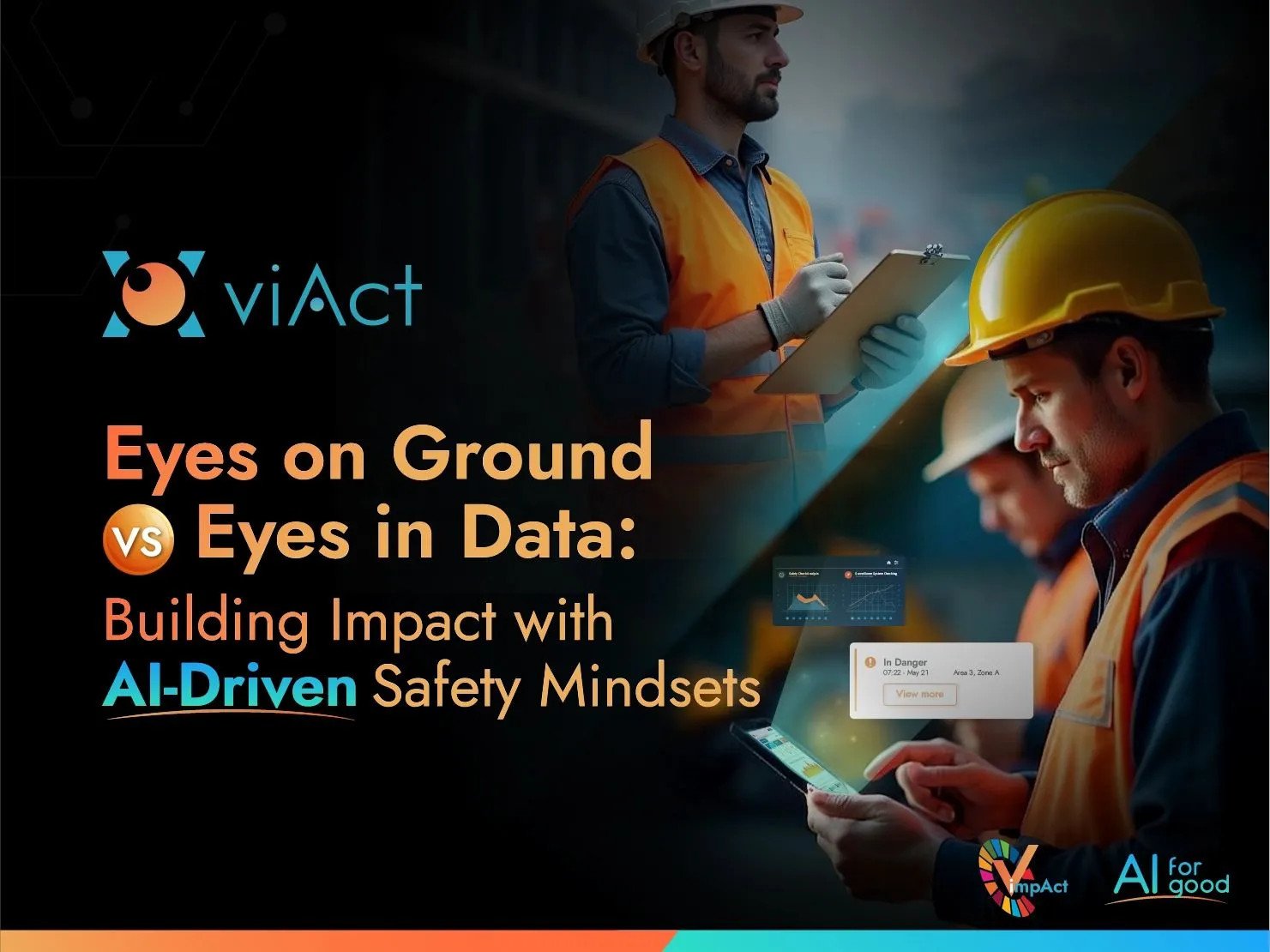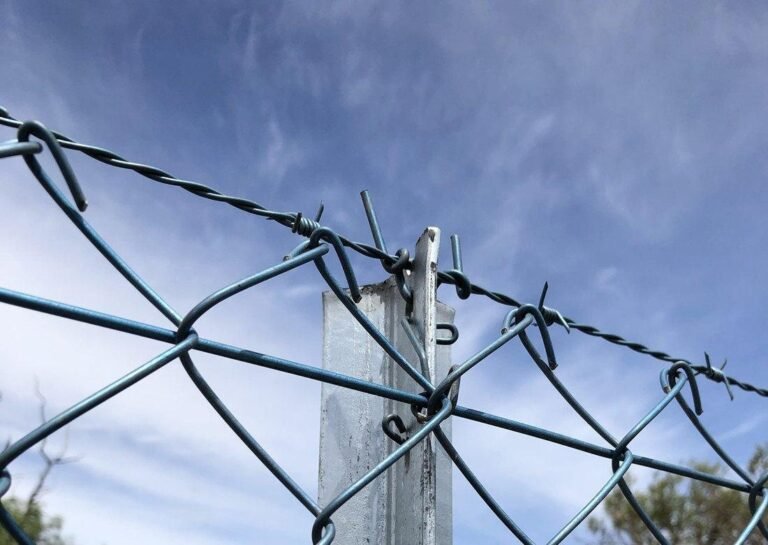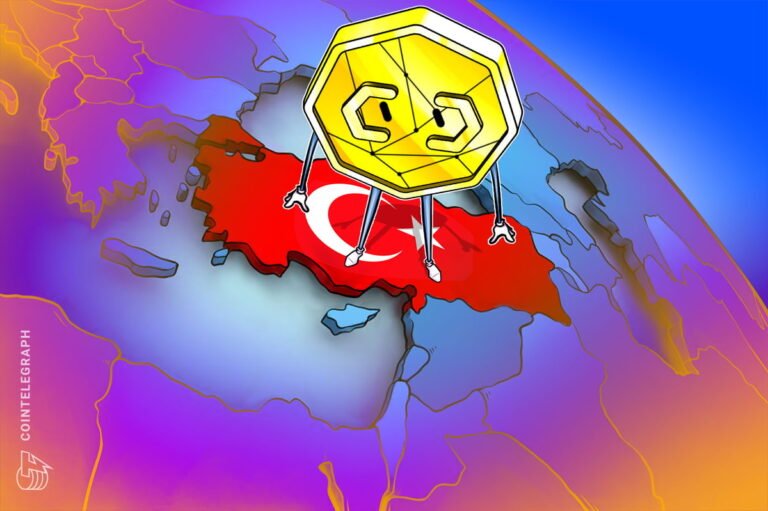
In high-risk industries like construction, manufacturing, oil & gas, mining, and logistics, safety has always been a priority. Yet, despite years of checklists, audits, and toolbox talks, accidents still happen.
Why? Because safety isn’t just about rules – it’s about mindset.
In today’s world, we stand at a turning point: where traditional “eyes on the ground” are being powerfully augmented by “eyes in data.”
Artificial Intelligence (AI), combined with real-time data from sensors, cameras, wearables, and machines, is not only identifying safety risks faster, but it’s also helping build safety mindsets across every layer of the workforce.
From Ground Reality to Data-Driven Insights: Turning Actions into Awareness
Every unsafe behavior, near miss, or hazard spotted on-site is a learning opportunity. However, in traditional models, much of this critical information remains anecdotal or delayed. AI changes this by converting ground activities into structured safety data that can be measured, analyzed, and acted upon.
Take the example of a large infrastructure project deploying computer vision on-site. Cameras are positioned at critical risk zones—scaffolds, machinery zones, and entry gates.
These video feeds are analyzed in real-time using AI algorithms trained to detect PPE violations, unauthorized entries, unsafe postures, or dangerous proximity to heavy machinery.
Now, when a worker enters a restricted zone without a helmet or safety harness, the safety management system captures the incident, timestamps it, tags the worker (via badge or uniform color recognition), and pushes an alert to the safety supervisor.
But more importantly, this data doesn’t just disappear after the alert—it’s stored, aggregated, and visualized on dashboards.
Over weeks, this data is analyzed to reveal patterns: for instance, a heatmap shows that 65% of PPE violations occur during shift changes or near material storage areas.
With this insight, the safety team repositions safety signage, increases patrols during specific hours, and deploys refresher training to affected teams.
This is how both ways operate under risky safety breach situations.
|
Eyes in Data (AI-Powered) |
||
|
❌ Spotted manually by supervisor; may go unnoticed |
✅ Computer vision detects and triggers an instant alert |
|
|
Machine Overuse/Overheating |
❌ Relies on operator judgment or periodic checks |
✅ Sensors + Vision AI monitor thresholds in real time |
|
Worker Fatigue or Heat Stress |
❌ Based on observation or assumptions, mostly self-reporting |
✅ Smart wearables track vitals like heartbeat and temperature to alert when thresholds spike |
|
❌ Noticed after an incident or from CCTV review |
✅ AI flags risky routes, overload, and pedestrian proximity using real-time video and past data |
|
|
❌ Requires manual entry; often under-reported |
✅ AI logs and categorizes near misses with AI video analytics |
According to McKinsey, in the next three years, 92% of companies are aiming to increase their investments in AI, mostly due to its long-term benefits.
When safety data is contextualized over time, highlighting root causes and identifying repeat violations, it shifts the culture from blame to understanding. Field workers begin to see the value of their actions; managers gain foresight into potential risks; executives make better investments in safety infrastructure.
This is how a data-driven mindset takes root—built on facts, not fear.
Safety Culture 2.0: How AI Helps Shape Mindsets
A true safety culture goes beyond protocols. It’s about embedding safety in decisions, behavior, and thought processes. Complex worksites often result in accidents from multiple layers of failure.
When an AI-powered safety monitoring solution is used, it acts as a digital barrier across these layers, filling the gaps before they align.
From listing out the important safety metrics to highlighting the top trends, an AI Safety Dashboard contributes highly in shaping the Mindset with its Weekly Overview summaries.
We are looking into the AI-driven safety overview for a construction company and this is how effective the reporting can be:
|
1. Safety Metrics at a Glance |
Safety Incidents |
Total: 5, Last Week Comparison: -20% (Last Week: 6) |
|
2. AI Insights & Trend Analysis |
AI-Powered Hazard Detection |
Detected Hazards: 15, Accuracy Rate: 92% |
|
3. Employee Behavior & Engagement |
Safety Training Participation |
Total Trained: 120 employees, Upcoming Sessions: 3 |
|
4. Incident & Action Tracking |
Incident Resolution Time |
Avg. Resolution Time: 2.5 hours, Longest Pending Incident: 6 days |
|
5. Safety Compliance Overview |
Compliance Score |
Overall Compliance Rate: 92% |
AI in workplace safety is quietly reshaping mindsets by embedding safety into daily workflows rather than treating it as a separate activity. Through scenario-based analysis, the system encourages micro-corrections and awareness in the moment, empowering workers to make smarter, safer decisions that boost productivity without waiting for audits or incidents.
As employees interact with intelligent systems—whether through on-the-spot guidance or immersive, scenario-based training—they begin to see safety not as a checklist, but as a shared responsibility.
With Generative AI facilitating workers with continuous AI driven insights against each trend analysis report and compliance overview, the result is a paradigm shift in safety from “I follow safety because I have to” to “I follow safety because I understand why it matters.”
The AI Safety Mindset: Transforming Roles Across the Jobsite
Building a truly resilient safety culture requires more than compliance—it demands responsible AI augmenting workplace safety. It is no longer the sole responsibility of safety officers or EHS departments.
From frontline workers to contractors and EHS leaders, AI doesn’t just improve compliance—it cultivates a shared mindset where safety becomes second nature.
1. For Workers: Micro-Actions That Reinforce Macro-Awareness
AI makes safety a lived experience for workers on the ground. It doesn’t overwhelm them with policy, but it builds muscle memory through constant, contextual nudges.
Every vibration from a smart watch when they’re too close to machinery, every visual warning from a helmet-mounted camera when entering a high-risk zone, reinforces a basic behavior: pause, assess, act safely.
For example, in a manufacturing plant in Singapore, workers under AI CCTVs receive real-time prompts when there are signs of fatigue, poor posture, or risky positioning. Over time, these micro-alerts from continuous ergonomic assessments rewire habits without needing formal retraining.
AI turns fleeting moments into teachable moments, encouraging self-correction and making safe behavior feel instinctive, not instructed.
2. For Contractors: Embedding Company Safety Culture from the First Interaction
Contractors rotate between sites, but AI ensures your safety culture travels with them.
Before arriving onsite, conversational AI chatbots walk them through site-specific hazard awareness, behavioral expectations, and even suggest training refreshers based on their risk profile.
When a Hong Kong-based construction company used the synergy between LLMs and Generative AI for onboarding to simulate high-risk tasks in VR, the contractors and sub-contractors who experienced virtual near misses showed 35% higher hazard recall on real sites.
The result? Safety isn’t something they pick up after joining—it becomes part of their first impression of the site.
3. For EHS Leaders: Driving Culture, Not Just Compliance
At the strategic level, AI empowers EHS leaders to build systems that reward safe thinking, not just punish unsafe acts.
AI-powered dashboards offer visibility into behavioral trends, which teams consistently report near misses, who follow digital PTW timelines, and where safety lags are likely to occur. Instead of reactive incident management, leaders can reward proactive safety engagement.
With generative AI assistants, safety communications, SOP updates, and comprehensive environmental briefs like following Green HSEQ can be personalized and reinforced across languages and roles, ensuring clarity without burnout.
This turns EHS from enforcement to engagement, nurturing a culture of shared accountability.
Conclusion: From Compliance to Culture – The Next Chapter of Safety
The future of workplace safety is no longer about checking boxes — it’s about changing behavior.
In a world where machines can see, predict, and guide, safety isn’t just the job of a few—it becomes the mindset of every single worker, supervisor, and leader. AI doesn’t replace human judgment; it amplifies it, making safety smarter, faster, and more proactive.
When “eyes on the ground” meet “eyes in data,” we don’t just catch incidents—we prevent them, learn from them, and build a culture where safety, sustainability, and efficiency walk hand in hand.
In this AI-enabled era, safety isn’t a policy—it’s a shared mission.
And that mindset? That’s what will define the next generation of workplaces.
1. How is AI-driven safety different from traditional safety practices?
AI-driven safety uses technologies like computer vision, AI video analytics, Generative AI, Edge computing, and IoT sensors to monitor workplace conditions in real time. Unlike traditional methods that rely heavily on manual inspections and post-incident reports, AI proactively detects hazards, predicts risks, and automates safety enforcement, leading to faster interventions and smarter decisions.
2. How does AI enhance workplace safety on heavy industrial sites?
AI monitors critical safety variables like PPE compliance, machine operation, heat stress, and fatigue in real time. It can automatically alert workers and supervisors of unsafe behavior or malfunctioning equipment, helping reduce accidents and near misses, such as on busy factory floors.
3. What role does AI play in safety management systems?
AI strengthens safety management systems by transforming static data into dynamic insights. From real-time alerts and automated incident reporting to predictive analytics and safety training recommendations, AI enables continuous improvement in safety planning, resource allocation, and employee engagement.
4. Can AI in workplace safety support compliance with environmental and sustainability standards?
Absolutely. AI helps businesses align safety goals with environmental and quality objectives. For example, it tracks energy waste, monitors emissions from unsafe operations, and ensures compliance with noise or air quality standards, paving the way for Green HSEQ integration.
5. How can companies get started with AI-driven safety without overhauling their entire system?
Organizations can begin with modular AI tools, like wearable sensors, computer vision for PPE detection, or AI chatbots for incident reporting. These systems can integrate with existing safety management systems, allowing gradual adoption while building a solid foundation for AI in workplace safety.
Ready to take workplace safety surveillance from traditional to
AI-driven safety insights?




